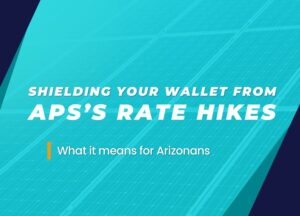If you run a nonprofit and have hesitated to switch to solar for your property, the federal energy tax credits may change your mind. Previously, nonprofits weren’t eligible for solar incentives because they lacked income tax liability. The 2022 Inflation Reduction Act (IRA) amendments changed things, and now these organizations can apply for the 30% tax credit. Do you want to learn more about these tax credits? Simple Solar has got you covered in the guide below.
The Inflation Reduction Act
The Inflation Reduction Act might be the most important climate legislation in the U.S. ever. It offers funding and incentives to organizations, escalating the world’s transition to clean energy. Thanks to this legislation, many individuals can now access solar energy, which was considered costly in the past. Now, nonprofits have the opportunity to make the most of inflation reduction incentives like tax credits, which are key to reducing greenhouse gas emissions.
What Is the Federal Energy Tax Credit for Nonprofits?
The federal energy tax credit is an incentive by the government to encourage nonprofits to invest in clean energy. Through the Investment Tax Credit (ITC), nonprofits can now access solar energy at an affordable cost. Until 2032, these organizations can enjoy a 30% tax credit for any solar projects they do.
How does this work considering NPOs lack tax liability? Since nonprofits lack tax liability, they enjoy this tax credit by applying for direct pay reimbursement from the IRS. These tax credits also apply to battery energy storage systems (BESS), which wasn’t the case before. Plus, a few bonus credits can save NPOs even more money depending on the project type and where they’re running it.
What Type of Clean Energy Is Eligible?
Previously, ITC only applied to energy storage projects if they were part of another eligible project, such as wind or solar power. Today, a standalone storage project qualifies for these clean energy tax credits. This is good news for an NPO that has already installed solar energy and wants to take on extra battery storage projects.
With that said, there are a few terms and conditions attached to these tax credits. Until 2024, all solar energy systems installed qualify for the 30% direct pay. But after 2024, systems with a net output of more than 1 MW must meet specific requirements to qualify for the full 30% tax credit. If they don’t, in 2024, they get 90% of the 30% tax credit; in 2025, they get 85% of the 30% tax credit. In 2026, they won’t receive any tax credit.
Bonus Credits
The ITC also includes several bonus credits, significantly increasing NPOs’ savings. These bonus credits are only available for projects located in particular areas or serving specific groups of people. Still, these changes make solar energy more attractive and accessible to these organizations. If you run an NPO or plan to install solar energy in underserved or low-income communities, you must know about these bonus credits and how they’ll benefit you.
There are six bonus credits, four of which fall under the Low-Income Communities Bonus Credit. You can’t apply for more than one of the four bonus credits. But still, even 10% on top of the 30% direct pay you’re already getting is a good incentive to turn to solar energy.
Let’s take a look at the four bonus credits.
- 10% bonus credit for projects located in low-income communities
- 10% bonus credit for projects located on Indian or tribal land
- 20% bonus credit for qualifying for low-income residential building projects
- 20% bonus credit for qualifying income economic benefit projects
Two additional 10% bonus credits can be piled on top of the other Low-Income Communities Bonus Credits. NGOs can apply for both these bonus credits if they’re eligible. The two extra bonus credits are:
- 10% bonus credit for a project located in an energy community
- 10% bonus credit for a project that meets the requirements for domestic manufacturing
Let’s say you have a $1 million solar project. Earning up to 50% or $500,000 worth of ITC credits is possible. We start with the 30% ITC direct pay, which covers $300,000. Now let’s assume your project is located in a community with a coal mine. This lets you earn a 10% bonus credit, equivalent to $100,000. If the same project is located in a low-income community, that’s another 10% bonus credit. That means you can qualify for up to 50% of bonus credits, significantly reducing the solar installation cost.
Remember that an NPO can only apply for these low-income bonus credits if it’s undertaking a solar project or a solar project paired with solar storage. If you’re only undertaking a solar storage project, you’re eligible for the 30% direct pay but not these other bonus credits.
Why Nonprofits Should Look into These Federal Energy Tax Credits
If you run a nonprofit, you know every dollar counts. Your source of funding depends on donors, and sometimes that cash isn’t enough to cover expenses. Then we have the energy costs that keep increasing, straining your finances even further. Installing solar is a major way to cut down on utility bills.
Solar energy has been inaccessible to NPOs for the longest time because of the cost and because they didn’t qualify for clean energy tax credits. But now they are eligible, making solar energy accessible. With the tax and bonus credits, you can reduce your energy cost, and the money you save can be spent furthering the mission of the NPO.
Switch Your NPO to Solar Power with Simple Solar
Solar energy has plenty of benefits for nonprofits as it helps reduce their energy bills. And through these federal tax credits, they can now enjoy these benefits. Simple Solar is dedicated to helping NPOs install quality solar panels. To learn more about solar energy systems and how we can help you get in touch with us.





